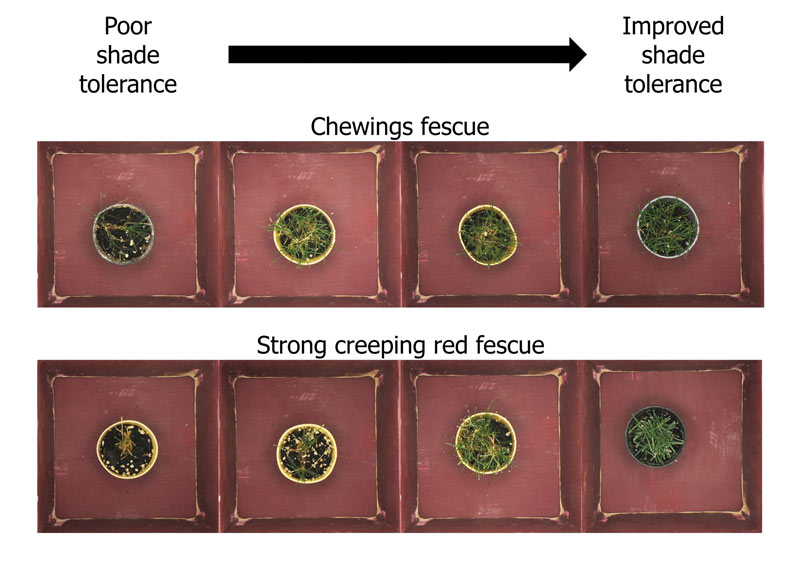
Photos by Dominic Petrella
Tolerance to foliar shade is desired for cool-season turfgrasses, but improving growth under shade has been challenging.
When subjected to both quantitative and qualitative (foliar) shade, tolerant turfgrasses should exhibit negligible etiolation, decreased chlorosis and efficient carbohydrate partitioning while maintaining normal amounts of tillering. However, in the field, shade intensity and the duration of shade can be quite variable, making selection for foliar shade tolerance difficult.
Overall, fine fescues (Festuca species) are said to be among the most shade-tolerant turfgrasses, but there has been little investigation into the variability for shade tolerance within and among these species. The objective of this research was to evaluate the use of a greenhouse-based approach for selecting for improved foliar shade tolerance among the fine fescues.
A total of 45 fine fescue entries — hard (Festuca brevipila), Chewings (F. rubra subspecies commutata), strong creeping red (F. rubra subspecies rubra) and slender creeping red fescue (F. rubra subspecies litoralis) — were germinated and grown under artificial foliar shade using a photoselective filter that reduced the red to far-red ratio to 0.68, and a black shade cloth that reduced light quantity by an additional 30%. Etiolation and tillering were measured throughout the experiment, and samples were analyzed for chlorophyll parameters, specific leaf area and biomass at the conclusion of the experiment.
Data analysis shows that most of the variation for improved shade tolerance lies within both Chewings and strong creeping red fescue, with Chewings fescues exhibiting the most improved growth under artificial foliar shade.
— Dominic P. Petrella, Ph.D., and Eric Watkins, Ph.D., University of Minnesota Twin Cities, St. Paul, Minn.
Editor’s note: An earlier version of this summary was published in the 2018 ASA-CSSA Meeting Abstracts, ASA and CSSA, Madison, Wis.
Teresa Carson is GCM’s science editor.